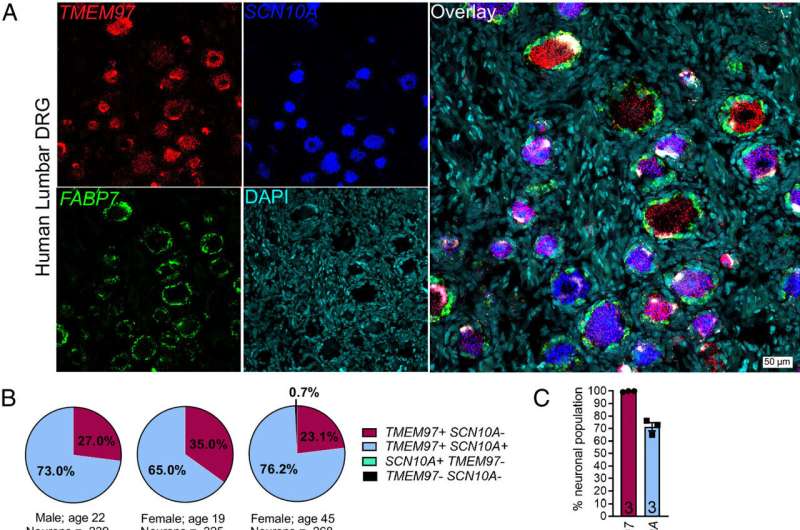This article has been reviewed according to Science X's editorial process and policies. Editors have highlighted the following attributes while ensuring the content's credibility:
fact-checked
peer-reviewed publication
trusted source
proofread
Researchers uncover potential non-opioid treatment for chronic pain

A new approach to treating neuropathic pain is making a key step forward thanks to researchers at The University of Texas at Austin.
Among the most difficult types of pain to alleviate is neuropathic pain, pain that is usually caused by damage to nerves in various body tissues, including skin, muscle and joints. It can cause patients to suffer feelings like electric shocks, tingling, burning or stabbing.
Diabetes, multiple sclerosis, chemotherapy drugs, injuries and amputations have all been associated with neuropathic pain, which is often chronic, sometimes unrelenting and affects millions of people worldwide. Many of the available pain medications are only moderately effective at treating this type of pain and often come with serious side effects, as well as risk of addiction.
Now researchers at UT Austin, The University of Texas at Dallas and the University of Miami have identified a molecule that reduces hypersensitivity in trials in mice by binding to a protein they have shown is involved in neuropathic pain.
The findings appear in the journal Proceedings of the National Academy of Sciences.
"We found it to be an effective painkiller, and the effects were rather long-lived," said Stephen Martin, the June and J. Virgil Waggoner Regents Chair in Chemistry at The University of Texas at Austin and co-corresponding author of the paper. "When we tested it on different models, diabetic neuropathy and chemotherapy-induced neuropathy, for example, we found this compound has an incredible beneficial effect."
The new compound, dubbed FEM-1689, does not engage opioid receptors in the body, making it a possible alternative to existing pain medications linked to addiction. In addition to reducing sensitivity, the compound can help regulate the integrated stress response (ISR), a network of cellular signaling that helps the body respond to injuries and diseases.
When well-regulated, the ISR restores balance and promotes healing. When it goes awry, the ISR can contribute to diseases such as cancer, diabetes and metabolic disorders.
"It's our goal to make this compound into a drug that can be used to treat chronic pain without the dangers of opioids," Martin said. "Neuropathic pain is often a debilitating condition that can affect people their entire lives, and we need a treatment that is well tolerated and effective."
"This work is the culmination of a wonderful five-year collaboration with our colleagues at UT Austin and is a great example of academic drug discovery pushing the field of non-opioid pain therapeutics forward," said Theodore Price, a professor of neuroscience at The University of Texas at Dallas and co-corresponding author of the paper.
More information: Muhammad Saad Yousuf et al, Highly specific σ 2 R/TMEM97 ligand FEM-1689 alleviates neuropathic pain and inhibits the integrated stress response, Proceedings of the National Academy of Sciences (2023). DOI: 10.1073/pnas.2306090120




















